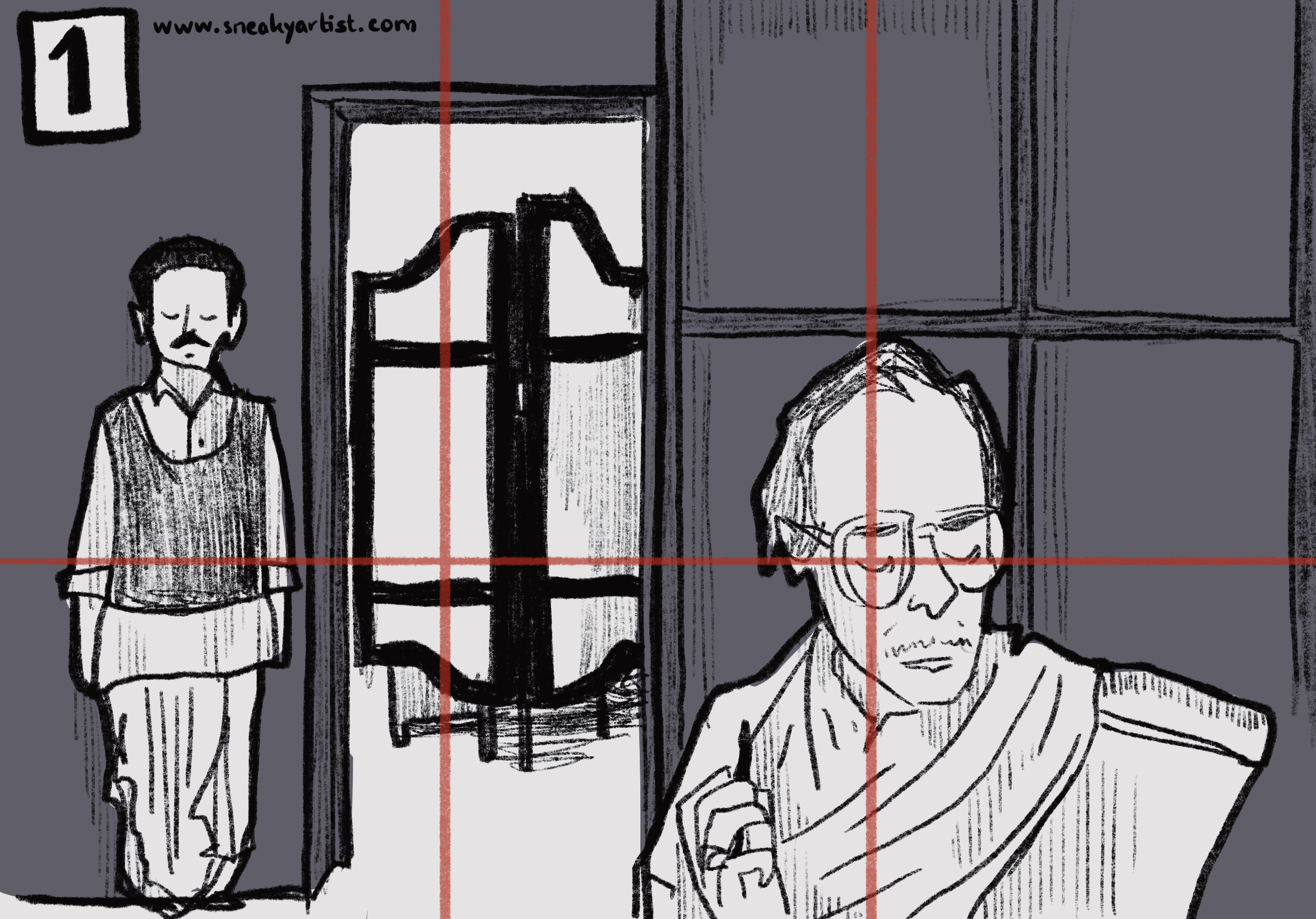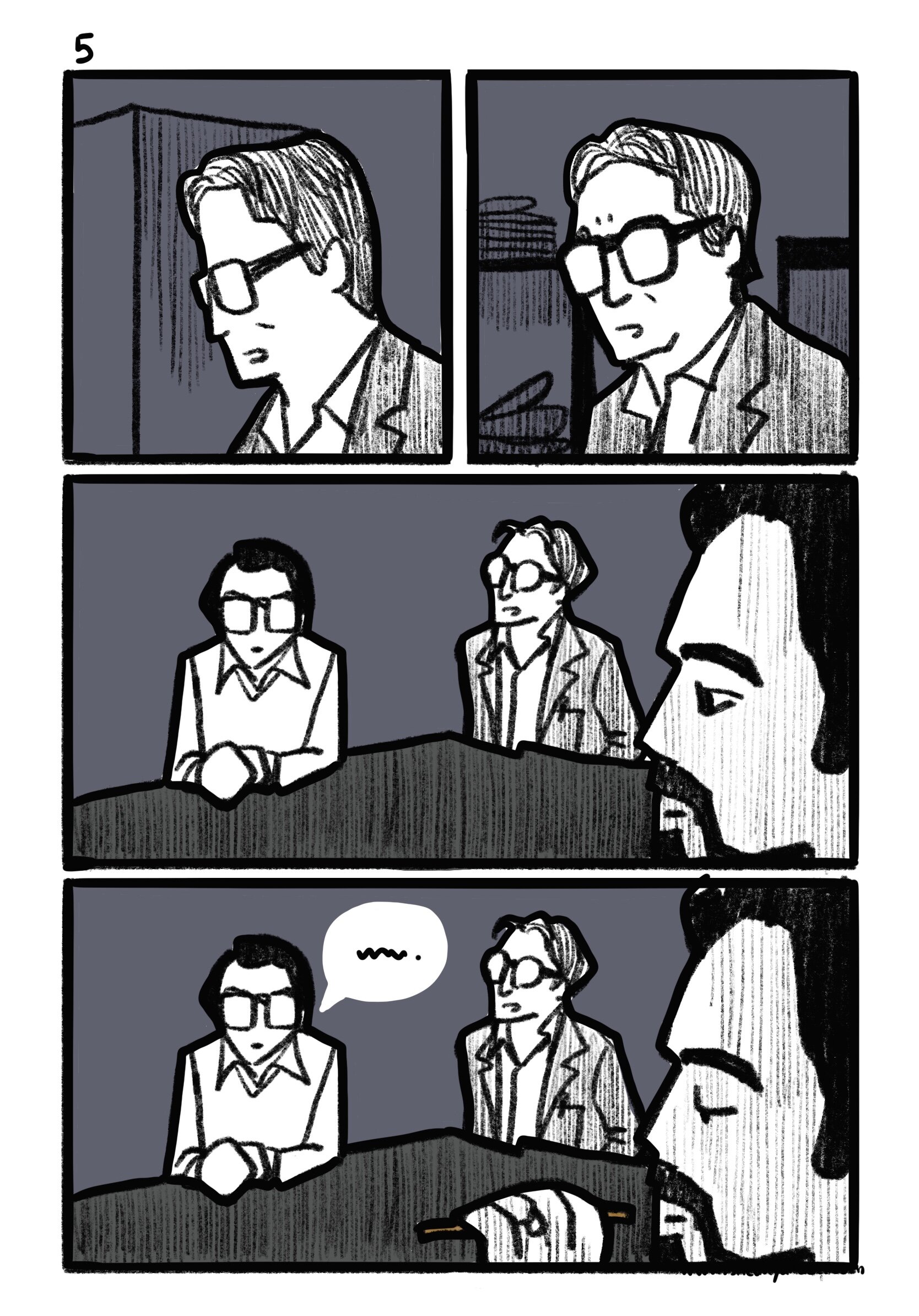"Enemy of the People (Visual Storytelling)
Great films reward the attentive viewer in unique and interesting ways. I watched Satyajit Ray's Nayak with a lot of interest, and wrote about a scene early in the film that stuck with me even afterward. Read it here.
I next watched Ganashatru (or, Enemy of the People) by Satyajit Ray. There are only a few settings in Enemy of the People. The entire film is shot at 3 indoor locations - Dr. Ashok Gupta's home, the editor's office at the local newspaper, and a local town-hall.
Having to flow in this limited space makes the visual information of set-design a significant part of the story. It really matters what you see at what time, and where you are watching from. Because how you see the action also determines how you 'read' a story.
Visual storytelling plays an interesting role in a plot driven by its dialogue. It encompasses all the unspoken details which give us clues about the intangibles - conversation dynamic, power equations between characters, and framing. How characters sit, where they stand, how we see them at their best and how we see them at their worst, all of it is told in the visual storytelling of Ganashatru.
A limited, indoor set also deals with time in a unique way. You can reference past events by reverting to the same POV at the same location. Characters standing once more where they stood before in time, but transformed, affected, or disturbed in some new way. Satyajit Ray's movies feed you information in this particular way. The set design seeps into your subconscious. You become sensitive to the subtle changes. They become your means to access the rhythm of the film.
I learned some things from deconstructing a significant exchange in Ganashatru. Here is the setting, near the 58min mark. It is at the editor's office of the Janavarta, a local progressive newspaper in Chandipur, in West Bengal. The municipal chairman is wielding coercive power over the editor of the newspaper, to suppress the publication of a public health report that will drive worshippers away from the local temple.
I am going to make two main observations about the visual storytelling in this roughly 5-minute scene.
the past looping to become the future, and the future becoming past
the great rewards for the attentive viewer
The Past-Future Loop
We are traveling eternally in the present. In that sense, the presence is infinite. Indeed, the present is all that exists. Everything else is memory or imagination. We do not travel through space-time in a straight line. Maybe there is no such thing as a straight line in space-time. Instead, the path of our life loops again and again. What was past becomes future, what is future becomes past. It's a heavy idea to digest, and visual metaphors do a better job of communicating it.
The editor is about to exit his office (through the door on the left) to greet the municipal chariman waiting for him. As he enters the frame, the camera pans to the left, to show us the impatient chairman's form. The door, in the background, has now shifted to the right.
It is in the correct position to maintain the visual continuity of action moving left-right. Left-to-right is the direction of our reading and writing (except for Arabic and manga), and therefore the direction in which we naturally perceive the passage of time.
After the two men greet each other, they will go into the office, thus entering the scene from the left side and exiting at the right. The portal for the past (the editor coming out) also becomes the portal to the future (the next scene).
This same past to future trick is played again afterwards. We will reach that scene in a bit.
In the editor's office, the characters have a rigid stage position. From their positions, they must emote, express power, and deal with adversity. Here is the initial placement. Note the power dynamic between them.
(1) (2) Here, in this room, the action takes place. To begin, the chairman speaks to the editor, warning him of untold consequences should he publish the article. He has only begun expressing his threat when the newspaper's publisher enters the scene. He has previously been described as cowardly and risk-averse, at least with respect to the demands upon an independent, leftist, progressive newspaper.
We witness the real-world power of the municipal chairman, as it crushes the earnest but weak spirit of the editor. The power is picked up by the publisher (in the background), as he turns his gaze from the chairman, and it is cast upon the editor when he looks at him and asks him why he has made this error in judgment. Meanwhile, the municipal chairman instructs the editor to run a memo from the municipality, to inform the public that malicious rumours are being spread to give the town a bad name.
(3) When Dr. Gupta's entry is announced, the editor tries to break up this dynamic, asking the chairman to wait out of sight in another room. But he refuses to go, saying - "Why should I go anywhere? Let him come." He knows he has a stranglehold and will not cede control at this time.
(4) Dr. Gupta enters, and takes his place in the middle of this dynamic. The editor is torn and visibly uncomfortable in his awkward position. The municipal chairman is cold and dismissive, knowing he has the upper hand. He says nothing while Dr. Gupta talks about his article. Then as he moves to leave, he asks the doctor if he is sure the article is getting published. Here, he is turning the screws on the editor, making him commit under duress. The editor capitulates and announces that he is recanting the article in order to not offend the religious sentiments of the general public.
(5) Here, now, the past again meets the future. Stunned, Dr. Gupta stumbles back to the chair he has just vacated a moment ago. But he is not the same man who sat in it before. His confidence has been shattered, and he is speechless, unable to believe the editor would go back on his word. Their exchange is terse, the doctor pleading his case and the editor increasingly more irate. The municipal chairman watches.
(5) (6) If you follow the scene this far, and are attentive to the machinations of this power dynamic, Satyajit Ray rewards you with the epic climax. We have a new shot, this time from next to the municipal chairman. His face dominates the tense exchange between the doctor and the editor. He takes out a long cigarette, lights it, and blows smoke into the air. The smoke engulfs the form of Dr. Gupta, seen from this perspective. He holds the cigarette and watches it curiously, and it appears to release smoke again around the form of the doctor. It is a beautiful visual metaphor - a fire lit by the chairman, engulfing the hapless doctor. The editor refuses to publish the article. Dr. Gupta understands that he has been outplayed.
I wouldn't have remembered this scene if not for the final payoff. The climax would still have been a good shot, but no more than some others. Its true value is created by the attention of the viewer who follows the whole exchange. After all, if you don't notice it, did it even happen? Certainly not for you.









